|
|
| Vintage Hockey Autographs, Autographed Memorabilia, Page 1
|
|
|
| 1933 Toronto Maple Leafs
program cover with autographs of Chuck Gardiner, Charlie
Conacher, King Clancy, Happy Day and Joe Primeau |
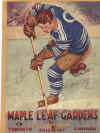 |
1933 Toronto Maple Leafs
program cover with hockey autographs of the following
players:
Toronto Maple Leafs - Charlie Conacher, King Clancy, Joe Primeau,
Happy Day, Bob Gracie, Ken Doraty and Alex Levinsky. For the
Chicago Blackhawks - Charlie Gardiner and Roger Jenkins.
In 1933-34 Charlie "The Big Bomber" would lead all NHL goal
scorers with 32 goals and 20 assists in 42 games. Finishing
second in the scoring race was his teammate Joe Primeau, with 14
goals and 32 assists in 45 games. Charlie Gardiner would win the
Vezina Trophy and lead all goaltenders that year with a 1.73
G.A.A. and 10 shutouts in 48 games. Gardiner would also backstop
the Hawks to their first ever Stanley Cup win in 1934. Tragically
though he would pass away two months later following a brain
operation. |
| Aubrey Dit Clapper
autographed 8" x 10" photo |
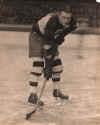 |
Throughout his career, Dit
Clapper was a respected leader on the ice and in the dressing
room. This quality was an asset after he retired and become a
coach in the NHL and the American Hockey League.
After a year of seasoning with the Boston Tigers of the CanAm
league, Clapper was sold to the Bruins in October 1927, and he'd
remain in the Bruins' lineup for the next 20 years - becoming the
first 20-year man in NHL history. As an experiment, Boston coach
Art Ross used Clapper as a right wing, and "Dit" adjusted well to
his new position. He scored a key goal in the Bruins' first-ever
Stanley Cup win in 1928-29, which came at the expense of the New
York Rangers in a best-of-three finals.
Eventually Clapper formed the ever-dangerous Dynamite Line with
Cooney Weiland and Dutch Gainor. This unit reached its peak
during the 1929-30 season when it led Boston to a 38-5-1
regular-season mark. Clapper scored 41 goals in 44 games, second
only to Weiland's 43. In 1931 and 1935 Clapper was chosen as the
right wing on the NHL Second All-Star Team.
By the 1937-38 season, Boston was in need of an overhaul.
Meanwhile, the Kraut Line of Milt Schmidt, Woody Dumart and Bobby
Bauer had taken on the lion's share of the scoring chores.
Clapper was therefore moved back to his original position on
defense, and he played some of the best hockey of his career. The
work of Dit Clapper and Eddie Shore was crucial to Boston's win
over the Toronto Maple Leafs in the 1939 Stanley Cup finals, and
between 1939 and 1941 he was named to the NHL First All-Star Team
three consecutive times.
Clapper demonstrated his well-known sportsmanship when he scored
his 200th career goal at Maple Leaf Gardens on January 8, 1941.
After the game, he presented the stick he used to reach this
milestone to Frank Selke as a token of his admiration. Later that
year, Clapper contributed five playoff assists as the Bruins won
their third Stanley Cup by sweeping Detroit in four straight
games.
During the 1941-42 season, Clapper suffered a severed tendon and
it was believed that the injury would end his career. Typically,
Clapper's resilience and determination inspired him to return the
following year with his customary effective play. After the
1943-44 schedule, Clapper was chosen to the NHL Second All-Star
Team. In 1945-46, he assumed the role of player-coach and guided
the Bruins to a Stanley Cup finals against the eventual
champions, the Montreal Canadiens. The following year, unhappy
with his diminishing ability, the 41-year-old retired as a player
six games into the season.
In an emotional ceremony at the Boston Garden on February 12,
1947, Dit Clapper was honored for his many accomplishments and
the Bruins retired his number 5 sweater. In all, Clapper recorded
228 goals and 474 points in the regular season as well as 13
playoff goals. He was the Bruins captain from 1932 to 1938 and
again from 1939 until his retirement in 1947. He also served as
the Bruins' coach for four seasons and led the team to 78
regular-season wins.
Clapper was elected to the Hockey Hall of Fame in 1947 when the
customary waiting period was waived in recognition of his obvious
greatness. |
| 1931-32 Boston Bruins
autographs on "Vulture Style" gloves |

|

|

|

|
These autographs on these
gloves are a little faint due to the absorption into the leather,
however they are still incredible for their age.
The gloves are signed/autographed by the following players.
Left glove: Aubrey "Dit" Clapper, Ralph "Cooney"
Weiland, Frank "Joe" Jerwa and Bill Touhey.
Right glove: Eddie Shore, Irwin "Yank" Boyd, Percy
"Perk" Gailbraith, Dit Clapper and Harry Oliver.
In 1931-32 the Boston Bruins finished the season with a record of
15 wins, 21 losses and 12 ties. Their top goal scorer was HOF'er
Marty Barry with 21 goals and their points leader (with 39
points) was "Dit" Clapper with 17 goals and 22 assists.
Cecil "Tiny" Thompson finished fourth among all goaltenders with
a 2.42 G.A.A, and lead the league with 9
shutouts. |
| 1928-29 New York
Americans autographed team photo |
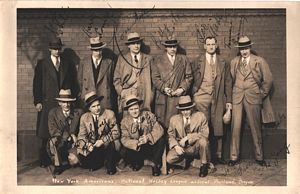
|
This photo of the New York
Americans was taken in Portland, Oregon when the New York
Americans came to Portland to play the Portland Buckaroos, of the
Pacific Coast Hockey League. This photo came from the estate of
Aubrey Webster who played for the Buckaroos in 1939 and 1940.
The photo is signed by (left to right): Tex "Wilfred" White, Joe
"Bullet" Simpson (HOF),Harry Connor, Johnny "Jake" Sheppard,
Lionel "Big Train" Conacher (HOF),Charlie "Rabbit" McVeigh, Billy
Burch (HOF), Roy "Shrimp" Worters (HOF), Leo Reise Sr. and Tommie
Gorman (HOF). It also has an inscription in the lower right
corner that says:
To our friend Babe, from the "Gang".
The Americans finished the 1929 season in second place in the
Canadian Division, behind the Montreal Canadiens with a record of
19 wins, 13 losses and 12 draws (ties). Their leading goal scorer
was Billy Burch, who finished with 11 goals and 5 assists.
In the Play-Offs the Americans lost a two games series against
the New York Rangers, by a combined score of 1-0. |
| Lorne Chabot autographed
album page and original 1934-35 C.C.M. Skates
photo |
 |
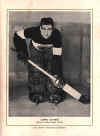
|
Lorne "Chabotsky" Chabot
was one of the greatest goaltenders to play the game. He started
his hockey career by leading the Port Arthur's to consecutive
Allan Cup champioships in 1925 and 1926. He then was signed by
Conn Smythe to play for the New York Rangers. As a rookie Chabot
won 22 of 36 games he appeared in and had 10 shutouts. He then
went on several years later to goaltend the 1931-32 Toronto Maple
Leafs to the franchises first ever Stanley Cup victory. Chabot
also played for the Montreal Canadiens, Chicago Blackhawks and
Montreal Maroons before retiring with the New York Americans in
1937. Chabot averaged 20 wins and 7 shutouts per season (in an
era when teams played no more than 48 games in a year). His
career GA average was a miniscule 2.04. He also was an NHL All
Star and Vezina trophy winner in 1935.
His NHL career totals are as follows:
201 wins, 73 shutouts, 2.04 GA everage. |
|
1939 NHL Stanley Cup
Champion, Boston Bruins, team signed program
insert |
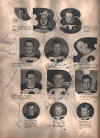 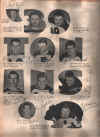 |
These pages (pasted into a
scrapbook) are from a 1939 program of the Boston Bruins, who won
the Stanley Cup in 1939.
These pages have been autographed by the following
Bruins:
Art Ross (HOF), Eddie Shore (HOF), Dit Clapper (HOF), Milt
Schmidt (HOF), Woody Dumart (HOF), Bobby Bauer (HOF), Bill Cowley
(HOF), Cooney Weiland (HOF), Frank Brimsek (HOF), Jack Crawford,
Charles Sands, Roy Conacher, Ray Getliffe, Gordon Pettinger and
Jack Portland.
|
| Eddie Shore autographed
"Complimentary Dinner Program for Eddie Shore", March 6th,
1933 |
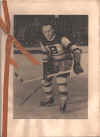
|
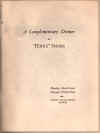
|

|

|

|
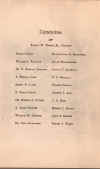
|
This program signed by Eddie Shore
is for a special dinner that was held in his honor on March 6, 1933 at the
Copley Plaza in Boston.
Eddie Shore was one of the
top defensemen ever to play in the NHL. Shore was a dangerous
scorer and passer and one of the roughest players of his era.
Shore was actually a forward who was converted to defense when he
joined the Edmonton Eskimos of the Western Hockey League in 1925.
Shore joined the Bruins when pro hockey in the West turned
sour.
Upon joining the Bruins for the 1926-27 season, Shore
demonstrated his physical style to the rest of the league by
actually skating over players who got in his way. He would knock
them down, skate over them, whatever it took to get to where he
wanted to be on the ice. But Shore was not a goon; he was a
highly skilled player with great stick handling ability and was
tough to knock off the puck. His end to end rushes were a sight
to be seen.
Eddie Shore was elected to the NHL First Team All-Star squad 7 of
the first 9 years the award was given. He is a four time Hart
Trophy winner and won 2 Stanley Cup Championships with the Boston
Bruins, first in 1929, and then ten years later in 1939. His
Bruins sat atop the American Division 8 times while Shore was on
board.
Shore bought the Springfield Indians of the American Hockey
League in 1939, playing with the squad that season. He also
played some home games with the Bruins that year, but as Boston
management grew frustrated with the arrangement, Shore was traded
to the New York Americans which became his last NHL team as his
NHL career ended that year. Shore ran the Indians until 1978 and
also owned teams in Fort Worth (USHL), Oakland (PCHL), and New
Haven.
|
| Turk Broda autographed
Beehive photo |
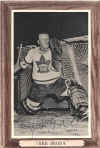
|
Broda grew up in Manitoba
and was developed as a player in the Detroit minor system,
playing with the Olympics in 1935/36. He was discovered by Leafs
owner Conn Smythe, who was in Detroit to check out another
goalie, Earl Robertson. But when Smythe saw Broda at the other
end, he immediately contacted Jack Adams of the Red Wings about
acquiring Broda, which he did for just $7,500 cash. Broda joined
the Leafs that fall and remained the crease guardian in Toronto
for most of the next 15 years.
Turk's outgoing style made him hugely popular with Leafs fans
and loved by his teammates. "The Leafs pay me for my work in
practices," he joked, "and I throw in the games for free." His
first stint with the Leafs lasted until 1943 and included the
historic Cup of 1942, when the Leafs rebounded from a 3-0 series
deficit to beat Detroit in seven games. But in 1943 Broda joined
the army and went off to England for two years, primarily to play
hockey.
When he was discharged in 1945, he went straight to the Gardens
and resumed practicing with the team. He was back in the nets,
and there he stayed for four more Stanley Cup finals, three in a
row from 1947 to 1949 and one more in 1951 in which all five
games went into overtime against Montreal. "I couldn't beat him.
Toe Blake couldn't. None of the Canadiens could," Maurice Richard
said after that series. Broda played the entire season in goal in
eight of his 11 seasons, and part of two others, leading the
league in shutouts twice. But for all his fame and glory, he's
also remembered for his weight problems, which Conn Smythe used
as a kind of playful publicity stunt.
Smythe ended Broda's run of more than 200 starts in a row when he
ordered Broda out of the goal until he got his weight down to 189
pounds. For days afterward, newspaper articles showed the smiling
goalie sitting on a scale eating steak or drinking juice for
dinner in an effort to lose the poundage. Broda joined a fitness
club and took up handball to stay lean, and his wife, Betty,
became famous for being the one person who could help him lose
weight and save the city's team.
Broda in practice was also famous. When the players had to skate
laps around the ice, coach Day would skate directly behind Broda,
who was in full equipment, hollering at him to keep up and join
the race. When in goal, Broda would face wave after wave of
shots, then Day would take the goalie's stick away and force him
to stop another series of pucks using only his arms and legs.
He retired after playing only one game in the 1951-52 season.
Broda was accorded a special night at the Gardens by Conn Smythe,
one of the rarest honors bestowed upon a Leaf. That night came on
December 22, 1951, and players and executives from Toronto, the
opposing Bruins and every other NHL team gathered to pay respects
to one of the greatest goalies of all time.
He was inducted into the Hockey Hall of Fame in
1967. |
| Turk Broda autographed
hockey puck; Seaside, Canada 1951 |
 |
I bought this puck from
the original owner, Tom Strizic who wrote a letter about how he
acquired the puck. He states the following:
I hope that you will enjoy this puck. To give you a little
history of this puck. This puck was given to me by Turk Broda in
1951. Turk Broda lived on the same street as my uncle in Seaside.
He used to play hockey in the street with the kids. One day I
asked him for an autograph. He said, "I'll do better than that".
He went into the house and came out with this puck. So, enjoy
like I enjoyed for the past 50 years.
|
| Jimmy Ward signed team
photo and letter to a fan |

|
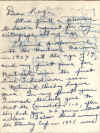 |
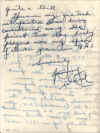
|
The photo and letter above
are both autographed by the deceased Montreal Maroon great -
Jimmy Ward. The photo on the left is a vintage print of the
1934-35 Montreal Maroons.
Jimmy Ward wrote to Roger Harris in the early 70's and in the
letter he writes the following:
Dear Roger, It is a pleasure to have a request for my autograph
at my age. I turned professional with the Montreal Maroons in
1927, at the age of 19, and my first game for Montreal was the
first time I had ever seen a National Hockey League game. In my
first year I scored the only goal to beat the Canadiens 1-0,
after they had gone 22 games without a loss. I also think winning
the Stanley Cup in 1935 was quite a thrill. However my greatest
satisfaction was being considered one of the finest two way
hockey players over my span of eleven years in N.H.L. Sincerely,
Jimmy Ward.
|
| 1938 New York Americans
autographed letterhead with team photo &
envelope |

|
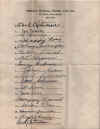
|

|
| The three items above are
from the 1937-38 New York Americans. They were sold to me by the
original owner, Jack Brown who lives in New Brunswick, Canada. He
obtained these items as a young man by writing to the New York
Americans and asking for the players autographs. In response,
they sent him the team addressed envelope (above left), team
photo (above right) and the team letterhead (above center) signed
by each player. The autographs on the letterhead include the
following players (in the order that they signed): Earl
Robertson, Joe Jerwa, Al Murray, "Happy" Day (HOF), Johnny
Gallagher, Nelson Stewart (HOF), Art Chapman, Tommy Anderson,
Lorne Carr, Eddie Wiseman, Dave Schriner (HOF), Joe Lamb, Jack
Shill, Happy Emms, Dede Klein, Hooley Smith (HOF), Ching Johnson
(HOF) and Mervyn Red Dutton (HOF). |
| HOF'er Edouard "Newsy"
Lalonde autographed 3 x 5 |
 |
The above item was signed
by deceased HOF'er Edouard "Newsy" Lalonde. He signed it on
February 6, 1970 while living in a Nursing home in Montreal.
A native of Cornwall, Ontario, Newsy Lalonde earned his nickname
by working in a local newsprint plant as a youth. In 1907 Lalonde
joined the Toronto club of the newly formed Ontario Professional
Hockey League. This was where he first gained wide attention by
winning the scoring race with 29 goals in only nine games. The
Toronto squad captured the inaugural OPHL crown that year but
lost out to the Montreal Wanderers in the Stanley Cup challenge.
Lalonde played a second year in Toronto before moving to the
newly formed Montreal Canadiens National Hockey Association
franchise in 1910. Partway through the season he was traded to
the Renfrew Millionaires, but this only enhanced his performance.
On March 11, 1910, he scored nine goals in one game, an NHA
record that was never beaten and only equaled by Tommy Smith. He
also won the league's inaugural scoring title. In 1911-12,
Lalonde headed west to play with the Vancouver Millionaires of
the Pacific Coast Hockey Association, where he led the league
with 27 goals. The next year he returned to the Canadiens and won
another NHA scoring championship. His offensive gifts were a
significant factor behind the franchise's first Stanley Cup title
in 1915-16. Lalonde remained with the Canadiens when the club
joined the NHL in 1917-18. His scoring continued and he led all
NHL scorers in 1918-19 and 1920-21. On January 19, 1920, he
scored six goals in one game. After a falling out with Canadiens
owner Leo Dandurand, he was traded to the Saskatoon Sheiks for
Aurel Joliat in a move that benefited both parties. In his first
year in Saskatchewan, playing coach Lalonde added the Western
Canada Hockey League scoring title to his list of
accomplishments. Lalonde returned to the NHL as coach of the New
York Americans in 1927. He also coached the Ottawa Senators and
Montreal Canadiens before leaving the game for good in 1935. He
was inducted into the Hockey Hall of Fame in 1950.
|
| Boston Bruins letter
signed by HOF'er Art Ross along with contract
documents |
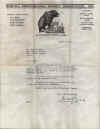 |

|
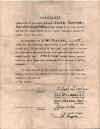
|
| The three items above all
came from the estate of Lloyd Durham who played in the USHL and
AHL from 1948-1957. The first letter w/envelope (above left) is
an invitation from the Boston Bruins, signed by HOF'er Art Ross,
to report to the Bruins on September 6, 1947 in St. Catherines.
The other letter (above center) is an agreement to potentially
enter into a Contract with the St. Louis Flyers of the AHL in
1944. |
| HOF'er Frank Boucher
handwritten, autographed Madison Square Garden
letterhead |
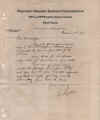
|
A very clever center who
became an innovative coach, Boucher joined the Northwest Mounted
Police at seventeen, then paid $50 to buy his way out so he could
play professional hockey. He began his career with Ottawa in
1921. After one season there, he played for the Vancouver
Millionaires in the Pacific Coast Hockey League from 1922-23
through 1926-27, then joined the New York Rangers of the NHL.
He was nicknamed "Raffles" after the gentleman thief in E. W.
Hornung's stories because of his puck-stealing ability and his
consistently clean play. Boucher won the Lady Byng Trophy, for
combining sportsmanship with a high level of play, seven times in
eight years, so the NHL finally gave it to him to keep in 1935
and had a new one made.
For much of his time with the Rangers, he centered Bill Cook at
right wing and Bill's brother Bun at left wing. Boucher led the
NHL's American Division with 35 points in 1927-28 and was among
the top ten scorers six other times. He retired after the 1937-38
season and became the Rangers' coach in 1939.
Boucher was the first coach to pull his goaltender for an extra
skater late in the game, and he developed the box defense for
killing penalties. He also taught his teams to attack when
short-handed; in 1939-40, when the Rangers won the Stanley Cup,
they scored almost twice as many goals on opponents' power plays
as the opposition did.
In 1942, Boucher proposed adding the red line to the hockey to
speed up play. He later explained, "My thought was that hockey
had become a see-saw affair. Defending teams were jammed in their
own end for minutes because they couldn't pass their way out
against the new five-man attack." At that time, teams weren't
allowed to pass the puck out of the defensive zone; when the red
line was added for the 1943-44 season, the rule was changed to
allow passing from behind the blue line up to the red line.
Boucher made a brief comeback as a player in 1944, but gave it up
after fifteen games. He was replaced as the Rangers' coach during
the 1948-49 season, returned to the job in 1953, and retired for
good before the season was over. |
| HOF'er Frank Nighbor
"Pembrooke Peach" autographed letterhead |
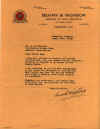
|
Frank Nighbor was one of
the NHL's first great players. He had played in the PCHA(Pacific
Coast Hockey Association) and the NHA(National Hockey
Association), the forerunner to the NHL. Nighbor played his early
hockey in his hometown of Pembroke with the Pembroke Debators in
1910-11. From here he moved onto the Port Arthur Bearcats in
1911-12, and then to the Toronto Blueshirts of the NHA, in
1912-13.
In his first professional season with the Blueshirts he bagged
25 goals, 0 assists for 25 points in 19 games. The 1913-14 season
saw Frank jump to the Vancouver Millionaires of the PCHA where he
played for two seasons, and was voted to the PCHA First All Star
Team in 1915. Here, with team mates Cyclone Taylor and Mickey
MacKay, Nighbor led Vancouver to the Stanley Cup, defeating his
future team, the Ottawa Senators. In the two seasons he was with
Vancouver, Frank managed to score 33 goals, 12 assists for 45
points in 28 games, well over a point a game.
In the early days of hockey players were paid hefty sums of
money to move from league to league. It was not uncommon for
players to play in several different leagues over their careers,
each time, making more money. Frank Nighbor was no different, so
in 1915-16 he jumped to the NHA's Ottawa Senators. It should be
noted here that the Ottawa Senators had 2 teams in the NHL. The
first played from 1917 to 1934 and the second team began in
1992.
While in his final season in the NHA, Frank tied Joe Malone with
41 goals to lead the league in goals. The Ottawa Senators moved
to the NHL when it was formed in 1917. Frank wasted little time
in establishing himself as a scoring threat in the new NHL in its
inaugural season of 1917-18. In 10 games he scored 11 goals and 8
assists. Frank's production increased over the next two seasons.
In 1919-20 Nighbor had 26 goals, 15 assists in 23 games and also
led the league in Playoff scoring and points with 6 goals, 1
assist for 7 points. In that same year, Ottawa won it's first
ever Stanley Cup, defeating the Seattle Metropolitans. Although
the 1919-20 season was Frank's pinnacle season in terms of point
production, it didn't stop him from continuing to be a dominating
force in the new NHL. He continued to be in the top 10 scoring
list until the end of the 1920-21 season, and then later
reappeared on the list in 1925-26.
It has been recorded that Frank possessed a skating ability
rivaled by few players of his era. His playmaking prowess and
great defensive ability made him a threat no matter where he was
on the ice. Before the NHL was formed, Nighbor had twice scored 6
goals in a game, a number which by today's standards would rank
him second in most goals in a game, and he would be only the
second player in any era to have done it twice, Joe Malone had a
7 and a 6 goal game in his career. Frank was the first recipient
of the Lady Byng Trophy in 1925, and a year later he became the
first winner of the Hart Trophy.
One of the NHL's true all time greats, Frank was named to the
Hockey Hall of Fame in 1947. |
| HOF goalie Terry Sawchuk
signed program and photo |
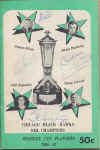 |
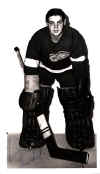 |
Record books show that
Terry Sawchuk was one of the greatest goaltenders ever to play in
the NHL. He played in 21 seasons with five different teams. His
103 career shutouts set a record that might never be broken.
Sawchuk did a tremendous amount for the game of hockey, but it's
a shame to see what hockey ended up doing to him.
Sawchuk entered the league in 1951 as a bright young prospect
with the Detroit Red Wings. He played all 70 games for the Wings
that season, compiling 11 shutouts and a goals against average of
1.98. He was awarded the Calder Trophy for his spectacular play.
Things went well for Sawchuk over the next four years. He won
three Vezinas and three Stanley Cups, including back-to-back wins
in 1954 and 1955.
Seemingly on top of the world, Sawchuk then started running into
trouble. After winning the Cup in 1955, Detroit shocked everyone
by trading Sawchuk to the Boston Bruins. The trade stunned
Sawchuk. He started to have doubts about his abilities to play
the game. He kept wondering if he was good enough despite his
impressive feats.
These games going on inside of his head cause Sawchuk to falter
in Boston, and his absence in Detroit caused the Red Wings to
falter as well. Sawchuk would soon rejoin the Wings, and
eventually regain the form that made him perhaps the greatest
goalie of all time. However he remained mentally unstable. The
mental stress of playing goalie in the NHL combined with an
incredible amount of physical injuries took their toll on
Sawchuk.
Hockey seemed to be Sawchuk's release from the stress and games
going on inside his head. He is arguably the best the game has
ever seen between the pipes. He played more games and seasons
than anyone. He had more wins and shutouts than anyone. His
amazing 103 career shutouts may never be approached again.
Terry Sawchuk died in 1970, one year later he was elected into
Hockey's Hall of Fame. |
| HOF'er Lester "The
silver fox" Patrick signed bio page |
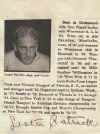 |
Beginning in 1903, Lester
"The Silver Fox" Patrick played a significant role in hockey
history for nearly half a century. As a player, he was one of the
top rushing defensemen of his day and a team leader. Patrick was
also an inspirational coach and a respected team administrator.
Along with his brother Frank, he pioneered the construction of
artificial rinks and formed the Pacific Coast Hockey
Association.
Patrick first played shinny on the frozen ponds of his native
Drummondville, Quebec, before his family moved to nearby
Montreal. He learned the game in the amateur leagues of Montreal
but first gained fame as a star offensive blueliner with Brandon,
Manitoba, of the North West Hockey League. He was a key member of
the squad when it issued an unsuccessful challenge for the
Stanley Cup against the Ottawa Senators in March 1904.
He returned to Montreal to play a year with the Westmount club
before joining the powerful Montreal Wanderers in 1905-06. He was
an instant success and helped his new club dethrone the Senators
as Cup holders that same season. Patrick helped the Wanderers
repeat as champions the next year. His exceptional passes
benefited the likes of Ernie Russell and Cecil Blanchford.
He moved to Nelson, British Columbia, in 1907 to work in the
family lumber business but continued to play on a local team.
Patrick returned to the headlines with the Edmonton squad that
lost a Stanley Cup challenge to the Wanderers in 1908. His
brother Frank joined him at this time.
The Patrick brothers played with the Renfrew Millionaires during
the inaugural season of the National Hockey Association in
1910-11. The following season, they returned to British Columbia
and began plans for a new league of their own. Formed in 1911-12,
the Pacific Coast Hockey Association attained a reputation on par
with the NHA - and later the NHL - until it was renamed the
Western Canada Hockey League. The Patricks lured away many top
stars of the NHA to give their new loop instant legitimacy. Such
icons as Cyclone Taylor and Newsy Lalonde thrived in the
wide-open style of the PCHA. Many considered it to be the most
exhilarating pro league ever.
The brothers were also innovators. They sold the lumber company
to finance the construction of the country's first artificial ice
rinks in Vancouver and Victoria. As a player in the PCHA, Lester
Patrick skated chiefly for the Victoria Cougars but also suited
up briefly for the Seattle Metropolitans and the Spokane
club.
He retired in 1922 to focus on managerial responsibilities but
returned to help anchor Victoria's defense in 1925-26. Following
the demise of the Western Hockey League at the end of that
season, he joined the expansion New York Rangers as coach and
general manager after the club's brass let Conn Smythe go because
they were worried he hadn't assembled a sufficiently competitive
roster.
The Rangers won the Stanley Cup in the club's second year. During
the finals against the Montreal Maroons, the 44-year-old Patrick
saw emergency duty in goal after Lorne Chabot was injured in the
second game. The Rangers won the Cup again in 1933 and Patrick
continued to guide them until 1939, when he stepped aside to
focus strictly on his duties as general manager. Arguably the
finest bench boss of the 1930s, he earned selection as coach of
the NHL First All-Star Team six times. He was on hand when the
team won its third Stanley Cup in 1940 and remained its GM until
1946.
After leaving the NHL, Patrick took over the operation of the
Victoria Cougars, a minor professional outfit in the Pacific
Coast/Western Hockey League. He left that post for retirement in
1954. Patrick was elected to the Hockey Hall of Fame in 1947.
Since 1966, the NHL has presented the Lester Patrick Award to
honour a recipient's contribution to hockey in the United
States. |
"The Bread Line" - Bill
Cook, Bun Cook and Frank Boucher signed 3 x 5
(with Butch Keeting) |
 |
| The Bread Line was one of
the most famous and productive scoring trio's in all of hockey
history. The Bread Line developed into one of the most formidable
combinations in NHL history. They were such a perfect fit that
New York coach Lester Patrick allowed them to devise plays at one
end of the rink while the remainder of the team practiced down at
the other. During the decade they played together, Boucher and
the Cooks accumulated over 1,100 points. They led the Rangers to
their first Stanley Cup in the team's second year of existence in
the spring of 1928. Boucher dominated the post-season scoring
with seven goals and 10 points, including both of New York's
goals in the Cup-clinching 2-1 triumph over the Montreal Maroons
in the final game of the best-of-five series. |
| Home | Hockey Autographs - Page 2
|
copyrightŠ2000-2008
All hockey memorabilia and their images are the exclusive property of the owner and may not be reprinted, copied or used without written permission from the owner. For licensing or other questions please contact hockeybum@proaxis.com
|
 |
|

